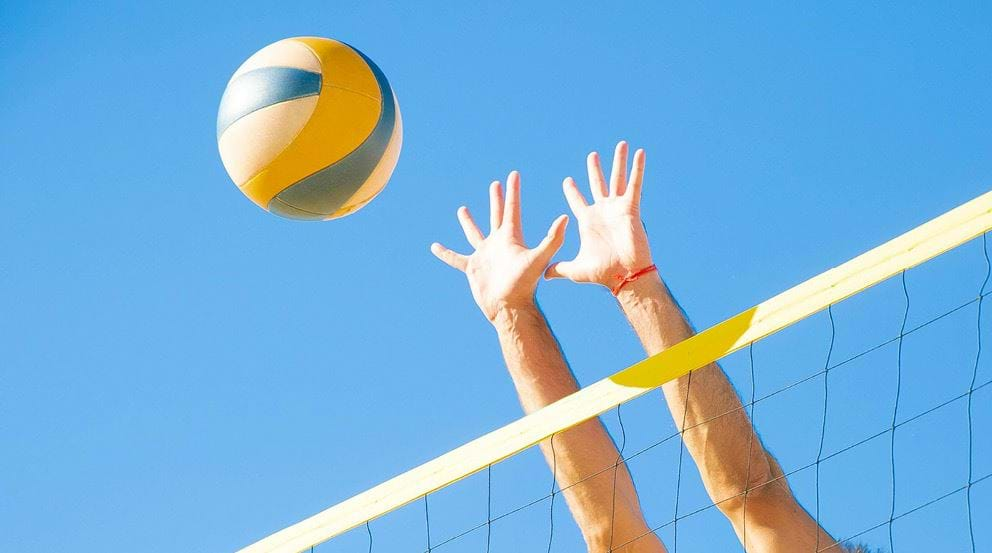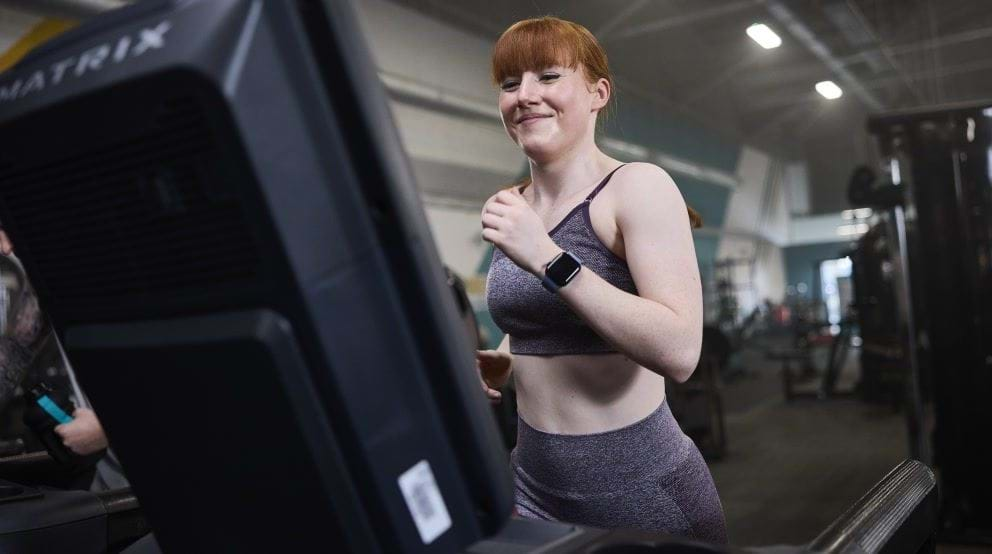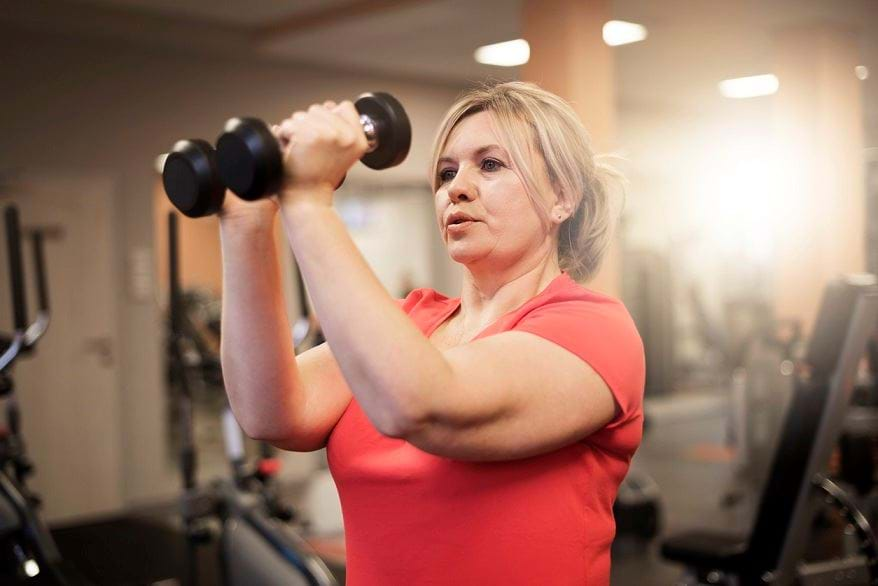The Best Core Exercises & Workouts For Women
What Is The Core | Benefits Of Core Workouts | Core Training Mistakes | How To Train The Core | Core Workout For Women | Visible Abs
Ladies, there's more to a strong core than having washboard abs. The core is made up of a group of muscles that play a role in everything from your posture to how much power you have in the gym. Strengthening your core can make a huge difference to your functional strength and endurance, so if you want to hit those PBs this article is for you.
Below, we cover what the core is, why it's so important for women to train their core, and some of the best core-strengthening exercises to try. Learn more about your core, or jump straight to our core workout for women here.
What Is The Core?
The core is the group of muscles around your stomach and back. These muscles work together to stabilise the spine and pelvis.
The Rectus Abdominals
Commonly known as the abs, this is the main muscle group people think of when it comes to the core. The rectus abdominals are the muscles behind the 'six pack', but they also play a vital role in allowing you to bend forwards, breathe forcefully, and keep your internal organs in place.
The Internal Obliques
The internal obliques are found on the side of the abdomen, below the external obliques, and above the transverse abdominal muscles. These essential muscles help the torso flex and rotate to each side. They also work alongside the diaphragm to help you breathe out forcefully.
The External Obliques
These muscles make up the outside layer of the muscles on the side of the abdomen, and they are the strongest of the abdominal muscles. As well as flexing and rotating the torso, these large muscles also flex the torso from the sides.
The Transverse Abdominis
Often referred to as the deep abdominal muscle, the transverse abdominis protects the internal organs and helps increase our abdominal pressure which allows us to lift more weight.
The Benefits Of A Strong Core For Women
Getting visible abs is very difficult, if not impossible for some people. It requires the right combination of genetics (where you naturally store fat), and a low body fact percentage. Some people are put off by a lack of visible results and neglect to train their core, which means missing out on a wide range of benefits. Having aesthetic goals is fine, but when it comes to strength training, we shouldn't forget the functional benefits of working each muscle group.
Some of the benefits that come with training your core include:
Better posture
Poor posture is a common modern day problem, especially for anyone who spends a large part of their day sitting down. Having a strong core plays a huge role in good posture, particularly when it comes to maintaining the right pelvis alignment. Research has shown as many as 75% of women suffer from an anterior tilted pelvis[1], where the pelvis is rotated forward. The main cause of this is a weak core, specifically the rectus abdominis.
Reducing or preventing back pain
Having a weak core is a major cause of a sore back, and women are far more likely to suffer from back pain than men (particularly after menopause[2]). When the core is weak, other muscle groups have to work extra hard to keep your torso stable. This can lead to muscle imbalances, strains, and even worse posture!
If you struggle with back pain, make sure to check out these stretches for lower back pain.
Improved athletic performance and better lifts
You might not think there's much core involvement in your standard lifts at the gym, or while playing sports, but it plays a crucial role in power and strength. To be able to perform at 100% and generate the maximum amount of force, both for upper and lower body movements, the spine and pelvis must be stable. When you have a weak core, other muscles need to provide stability, which means less power and strength available for the movement you're doing.
Having a strong core (and glutes!) allows athletes to perform twisting movements powerfully and safely. It also helps to stabilise the body to provide a better foundation for your lifts at the gym. Even if you don't consider yourself an athlete, working on your core is important in improving your workout performance - and your results!
More strength and endurance for daily jobs
From carrying bags to lifting your kids, your body faces strength demands every day and your core is integral to you performing these effectively, and without causing injury. Keeping your core strong means you can perform these tasks far more easily.
Increased balance and stability
Training your core helps the muscles work together to stabilise the pelvis and spine. When the core is stable, the rest of your muscles can move more efficiently.
Common Core Training Mistakes
While some women neglect their core entirely, others train the core inefficiently. Some common mistakes that we see being made are:
Training without a plan or progression
If your goal is to grow your glutes, it's likely you have a solid training plan in place that involves the same exercises and progressive overload. Yet when it comes to training the core, most people add on a few sit ups or similar at the end of their training when they're too tired to train properly, or only work the core once in a blue moon.
The best way to train the core is to stick to the same few exercises and focus on building mind-muscle connection and progressively overloading by either adding reps or weight. You'll see much more progress this way.
Neglecting core training altogether
There is a common misconception that training compound movements (exercises that involve more than one muscle group like squats and deadlifts) is enough to train the core, with no isolation work needed. While compound exercises like squats, or any exercise which requires the body to remain stable (like cable machine exercises) all work the core to some degree, performing core-specific exercises is key to really driving results and minimising the risk of injury when working out. Neglecting your core is likely to see you slow down progress in compound exercises as the main muscle groups you are training will get stronger quicker than your core will.
Focusing on sit ups
While sit-ups are probably the most renowned of ab exercises, there are other exercises which are more effective in strengthening the core and stabilising the hips and spine. Just as you wouldn't train legs with one exercise only, you shouldn't train your core with one exercise.
Not progressively overloading
Progressive overload is a key principle of building muscle and strength, yet most people stick to the same number of reps and weight (often bodyweight) when working their core. You need to continually make exercises more challenging if you want to continue to build core strength.
How To Train The Core Effectively
Want to build your own core workout? You'll want to include a mix of core exercises and 'anti-core' exercises.
Anti-core exercises are movements that train the core to resist movement, which helps to stabilise the spine, while core exercises train the muscles through creating movement (like sit ups). There are three types of anti-core exercises: anti-spinal extension, anti-spinal lateral flexion, and anti-spinal rotation.
Anti-spinal extension exercises: hollow holds, dead bugs, ab-wheel rollouts, plank
Anti-spinal lateral flexion exercises: farmer's carry, suitcase deadlifts, offset loaded split squats
Anti-spinal rotation exercises: standing Pallof presses, hollow holds, landmine barbell rotations
Core Exercises For Women
If you're looking for a ready-made core workout, try this 12-minute women's core workout. It's short but very effective - expect to feel your core muscles burning by the end! This uses no equipment so can be done at home or the gym.
Do each exercise for 45 seconds, followed by a 15 second rest -- this is one circuit. Perform the circuit twice.
Leg raises
- Lie with your back on the floor, arms by your side, palms down, and legs straight out.
- Push your stomach into the floor to keep your back flat, engage your core, then slowly raise both legs simultaneously.
- Aim to stretch your legs towards the ceiling, keeping your toes pointed.
- Once you've reached as high as you can, lower your legs in a smooth, controlled movement. Stop before they reach the ground. Repeat.
- Sit on the floor, feet in front of you, with your knees bent. If using a weight, hold this in front of your chest.
- Lift your feet off the floor, keeping your knees bent.
- Keeping a tall spine, lean your torso back so you're at a 45 degree angle from the floor, and 90 degrees from your thighs.
- Use your abs to twist your upper body to the left. Keep the weight/ your hands in front of your chest.
- Twist back to the centre, and then continue to the right.
- Turn back to the centre. This is one rep.
- Start on all fours, then place your forearms on the floor so that your elbows are stacked beneath your shoulders.
- Engage your core then step both legs back behind you to create a straight line from your feet to your head.
- Keep your abs pulled in throughout the exercise.
Jack knife
- Lie on the floor with your arms and legs stretched out.
- With your core engaged, slightly raise your arms and legs off the floor, with knees slightly bent
- Curl your body so you bring your arms up and over towards your knees, while you bring your knees up towards your torso - they should meet above your abs
- Ease back down to starting point, but don't fully lie back down - by hovering your arms and legs slightly, you'll be keeping the tension in your muscles until you've finished all your reps. Repeat.
Bird dog
- Start on your hands and knees, with your hands under your shoulders and knees under your hips. Brace your core
- Extend your right arm forward, while also extending your leg out behind you. Stop when they reach parallel with the floor.
- Slowly return both limbs back to the start.
- Do 45 seconds on each leg.
How To Get Visible Abs
There's no shame in wanting both the functional benefits of a strong core, and the aesthetics of toned abs. Getting a six-pack is highly influenced by genetics - for some people, it will be very difficult to achieve defined abs as they naturally hold fat on their stomachs.
If you do want visible abs, focus on building your core strength (you can check out our six-pack workout here) and if needed, lose weight. Losing weight healthily can be a minefield - check out our guide to weight loss here for help.
For more core inspiration, check out these 10 core strengthening exercises and this guide to oblique exercises for women. Or, for more tailored help, why not work with a Personal Trainer?
Find your nearest PureGym and get started today.


